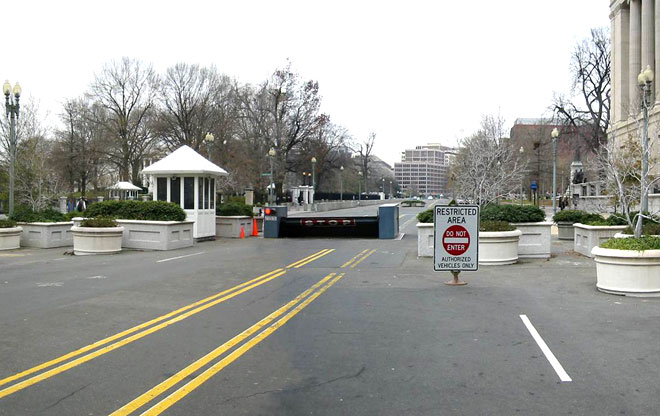
Pennsylvania Avenue, 2001
In the wake of the 1995 Oklahoma City bombing and the September 2011 terrorist attacks, ad-hoc security barriers restricted vehicular access andĚýimpeded pedestrian mobility,Ěýwhile marring the beautiful, dignified setting ofĚýPresident’s Park.ĚýIn 2002, after much debate and compromise, an initiative was undertaken to improve security and theĚýavenue.Ěý
Image: National Capital Planning Commission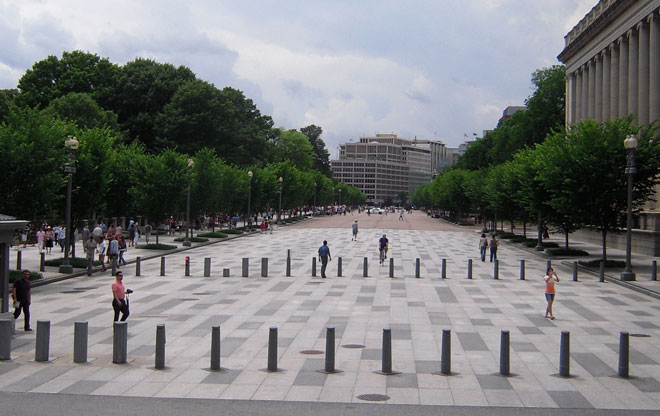
Pennsylvania Avenue Today
The avenue’s landscape and secured perimeter and checkpoints are designed toĚýprotect the White House grounds and create an attractive, welcoming, and flexible public space. Respecting the historic right-of-way and using familiar forms and materials to honor the place'sĚýimportance,ĚýMichael Van Valkenburgh Associates designed the space toĚýmediate between the intersections that bracket theĚýnorth-southĚýaxisĚýwith elements thatĚýstrengthen linkages between theĚýnaturalism ofĚýLafayette Park and the informality of the White House grounds.
Image: Elizabeth Miller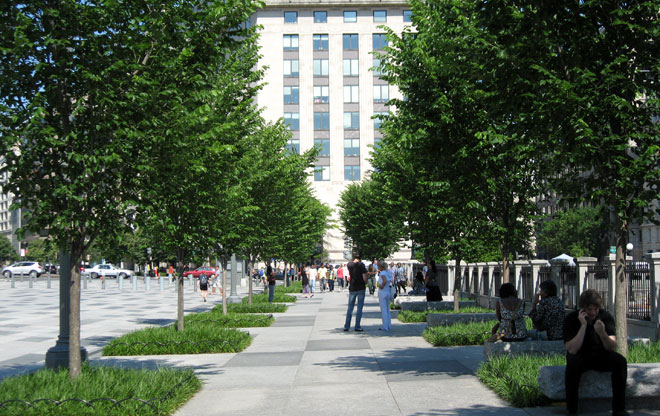
Pennsylvania Avenue Today
TheĚýquintessential American elm tree (the disease resistant Princeton variety) was chosen to line the avenue. To respect the space'sĚýformality, care was taken to choose trees of the same size and to perfectly align them to form a dense, symmetrical, upright canopy that will establish a stately promenade flanking the White House. Stone benches were placed perpendicular to the walk within the bosque of trees to provide comfortable shaded seating areas.ĚýĚý
Image: Elizabeth Miller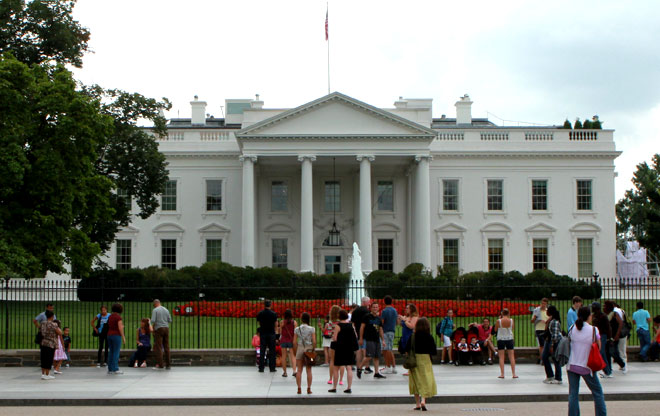
The White House
The location of the White House was influenced by the contour of the land and rivers. It sits on a low hill parallel with the north-south fork of two converging rivers and diagonally to the house of Congress, which was given the highest point. President WashingtonĚýlaid the cornerstone in 1792. First occupied in 1800, the house was set on fire by the British during the War of 1812. Over the years, it has been renovatedĚýto keep it structurally sound and wings were added to meet space needs.
Image: Elizabeth Miller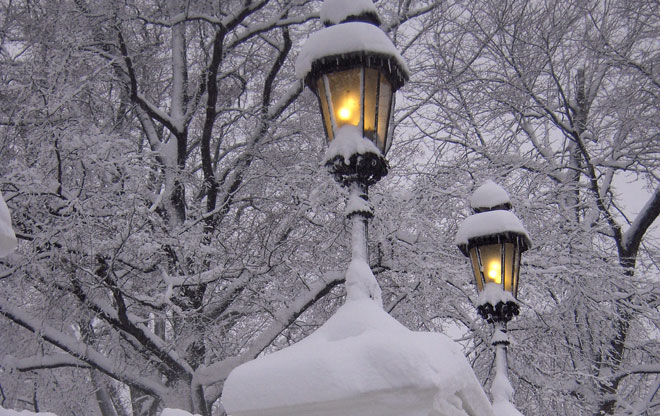
White House Gate Posts
The rusticated Tuscan gateposts along the front of the White House evoke strength and stability, and the torch lights announce the dignity and importance of the entrance to the White House Grounds. Perhaps the First Lady is waiting for the President’s arrival home.ĚýĚýĚý
Image: Elizabeth Miller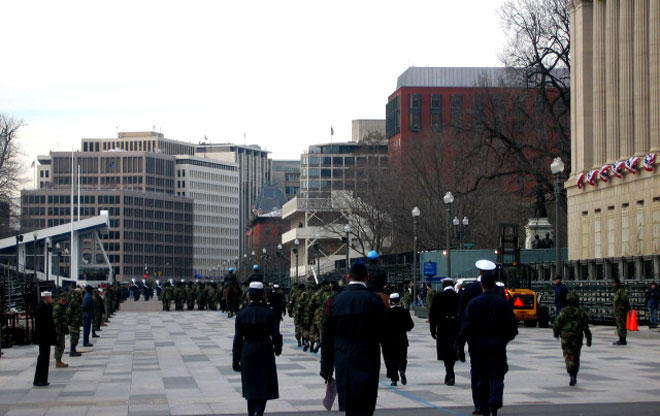
Practicing for the Inaugural Parade
The Inaugural Parade tradition informally began in 1789 as George Washington journeyed from Mount Vernon to New York City to take the oath of office; locals joined the procession as he passed through town. Formalized in 1809, subsequent parades have grown more elaborate with military escorts, marching bands, and floats. The security and streetscape elements were placed and designed to accommodate these special events.Ěý
Image: Elizabeth Miller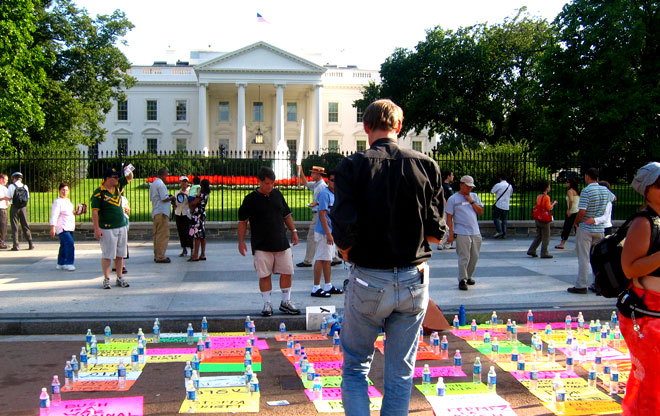
Parades, Protocol, and Protest
Major Pierre L'Enfant's 1791 city plan envisioned Pennsylvania Avenue as a ceremonial route between the White House and Capitol. In addition to Inaugural Parades, the avenue has hosted victory celebrations signaling the close of major wars; military and civil heroes being acclaimed; and receptions forĚýforeign heads of state. Citizens often choose the avenue as the location to demonstrate, exercising their freedom of speech.ĚýĚý
Image: Elizabeth Miller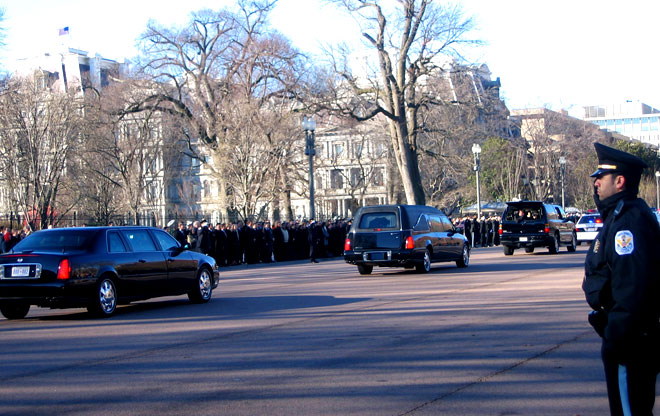
Funeral Processions
The avenue isĚýoften theĚýrouteĚýof Presidential funeral processions where citizens come together to express their sorrow. On a cold January morning in 2007, crowds stood at attention and somberly watched as President Ford’s hearse passed the White House en route to Andrew’s Air Force Base from where he was flown home to Grand Rapids, Michigan for burial.ĚýĚýĚý
Image: Elizabeth Miller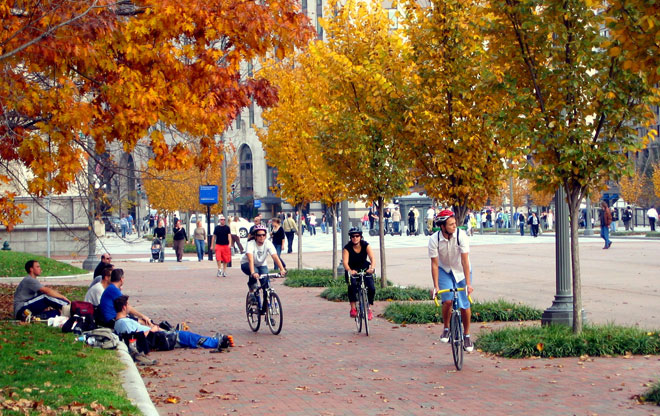
A Day on the Avenue
Perhaps not quite howĚýPresident Jefferson could have envisioned it, this stretch of the avenue is now like an expansive public plaza. On any given day it's common to find groups, large and small, demonstrating, visiting, resting their feet, strolling, bicycling, touring on segways, and even lingering to watch a serious game of street hockey.
Image: Elizabeth Miller